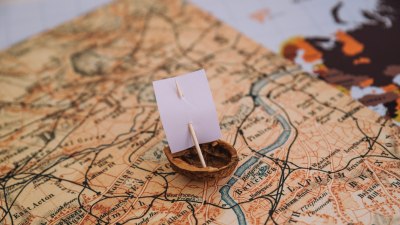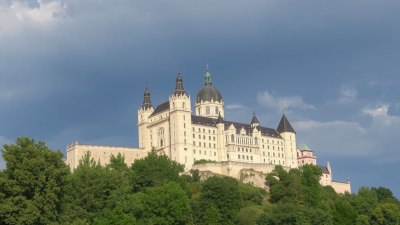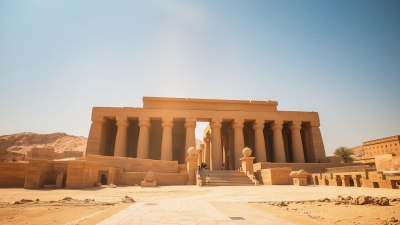Maps Forget on Purpose
Exploring the intricate relationship between memory and maps through the lens of purpose-driven forgetting.

Maps have long served as instrumental tools for navigation, representing physical landscapes and providing direction to those who seek to explore the world around them. However, maps are not merely static depictions of geography; they are dynamic entities shaped by cultural, historical, and personal narratives. One fascinating aspect that often goes unnoticed is the concept of purposeful forgetting in map-making. This article delves into how maps forget on purpose, examining the implications of this phenomenon on our understanding of space and place.
The Nature of Maps
To comprehend why maps might forget, we first need to understand their nature. Maps are complex representations of reality, often prioritizing certain features while omitting others. This selection process is inherently subjective and purposeful. For example, a tourist map may highlight attractions and landmarks while downplaying residential areas or less popular routes. In this context, forgetting is not merely an oversight but a deliberate act influenced by the mapmaker's intentions.
The history of cartography offers numerous examples of maps selectively forgetting parts of reality. During the colonial era, maps often depicted territories in ways that justified imperial expansion, omitting indigenous place names and geographical features that did not align with colonial perspectives. By selectively representing these spaces, colonial maps constructed narratives that marginalized entire cultures. Such practices emphasized the power dynamics at play in cartography, where the act of forgetting was a tool for control and domination.
Maps also play a crucial role in shaping cultural identities. In many cases, communities use maps to assert their presence and reclaim spaces that have been historically marginalized. However, the process of claiming space often involves a selective memory of the geography. For instance, a community may choose to emphasize specific landmarks that are significant to their cultural heritage while ignoring others that may evoke painful histories. This kind of purposeful forgetting helps to construct a narrative that fosters healing and identity, but it can also lead to the silencing of competing histories.
In the digital age, maps have transitioned from paper to interactive formats. Platforms like Google Maps have transformed how we navigate and understand our environments. However, the algorithms that underpin these digital maps also embody the concept of purposeful forgetting. For example, Google Maps may prioritize certain routes based on real-time traffic data, effectively 'forgetting' less-traveled paths or pedestrian shortcuts. This dynamic scrolling through information can lead users to overlook or forget alternative routes, reinforcing the path most users follow.
The act of forgetting in cartography raises ethical concerns. Who decides what to include or omit from a map? As map-makers and users, we must consider the moral implications of these choices. Maps can perpetuate stereotypes, erase histories, and shape perceptions in ways that can be damaging. A community may find itself represented in a way that doesn't reflect its true essence, leading to misunderstandings and further marginalization. Addressing these concerns requires a commitment to inclusive mapping practices that consider diverse perspectives and experiences.
Maps are not just tools of navigation; they can also be instruments of power and resistance. Activists and social movements have used maps to highlight issues such as environmental injustice, gentrification, and human rights abuses. In doing so, they often challenge the narratives embedded in traditional maps by bringing attention to areas that have been overlooked or misrepresented. By actively remembering and mapping these spaces, individuals and communities resist the forgetting that often accompanies mainstream narratives.
The psychological implications of how we interact with maps also shed light on the concept of memory and forgetting. When navigating through our surroundings, the maps we engage with influence how we perceive our environment. Research in cognitive psychology suggests that the physical act of drawing a map can enhance memory, leading individuals to remember certain landmarks better than others. In contrast, relying exclusively on digital maps may lead to a form of cognitive disengagement, where users forget significant details about their environment, as they rely on the device to provide directions without actively engaging with the space.
Natural disasters have a unique relationship with maps, often prompting communities to remember or forget specific places. After a significant event like an earthquake or a flood, maps may need revision to reflect the new reality. In some instances, towns may opt to forget the locations of past disasters, avoiding reminders of trauma. Conversely, maps showing areas affected by climate change often serve as poignant reminders of risks, welcoming an understanding of ongoing issues that cannot be ignored. This duality raises questions about how maps can reflect both loss and resilience.
As technology continues to evolve, we must consider the future of maps and the impact of purposeful forgetting on collective memory. How will emerging technologies like augmented reality and spatial visualization shape our interactions with spaces? Will they enhance our ability to remember overlooked histories, or will they further entrench selective forgetting? As map-makers and users, we must be vigilant in recognizing the role we play in constructing the narratives embedded in maps, actively questioning whose memories are honored and whose are omitted.
Understanding how maps forget on purpose reveals the complexity of memory and the narratives that shape our perceptions of the world. Maps serve as powerful representations of reality, shaping not only how we navigate but also how we understand space, place, identity, and history. Through an exploration of the intricate relationship between maps and memory, we are reminded of the importance of inclusive practices that honor diverse perspectives and resist the forgetting that can marginalize voices. In embracing this complexity, we can work towards a more equitable and just representation of our world in all its richness.











